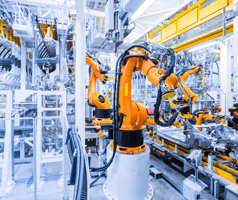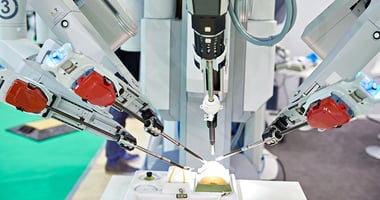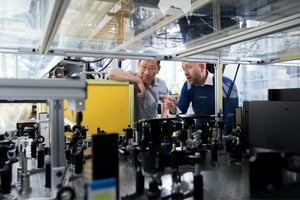After decades of technical manufacturing jobs taking a back seat to roles requiring a college...
Lessons from the Pandemic: Made in America
Early on in the COVID-19 pandemic, we learned a painful lesson about outsourcing. The fact that there few or no domestic manufacturers of ventilators, face masks, and other critical medical equipment and supplies added to the severity and spread of the virus. In addition to the medical supply industry, 60% of manufacturers experienced significant disruptions in their supply chain. It is time to take a hard look at insourcing/reshoring as part of America’s strategic preparedness plan, and that is exactly what astute manufacturers are doing.
Given the unprecedented disruptions in 2020, organizations are realizing that quicker response times to meet demand and a greater focus on innovation make companies more agile and resilient. A recent article in Forbes magazine predicts five manufacturing trends in 2021. The first is that manufacturers will shift to more localized production. The sense of urgency during unpredictable crises, and the ongoing threat to supply chains of the ongoing trade wars, will bring incentives to some organizations to “build where they sell.” The benefits of moving production closer to the customers are faster time to market, lower working capital requirements, and higher customer satisfaction.
The second prediction is that manufacturers will need to be more responsive to customer/consumer demands, especially in e-commerce. 2020 saw an increase of 18% in e-commerce sales. Of course, many brick and mortar business closed or reduced operations during the pandemic, so e-commerce filled the gap for customers. Experts predict continued growth even after the pandemic as customers appreciate the time-savings and ease of ordering online. The third is accelerated digital transformation. The impact of this health crisis on the availability of labor is the catalyst.
While more automation from digital transformation will eliminate some work, it will create new work. This is the fourth prediction. Advanced technology will lead to better paying jobs. Along with these jobs, manufacturing companies respond to the “new literacy” these new jobs will require by retraining current workers, STEM education, vocation and trade skills development and Makerspaces. The incorporation of artificial intelligenceand machine learning technology will enable more accurate and faster decision-making. Artificial Intelligence (“AI”) is the science of developing a system or software to emulate human cognition by enabling computers to learn and adapt through experience and patterns, rather than inference. Machine Learning is but one approach to AI that uses self-learning algorithms. The introduction of STEM programs that now include robotics will teach future workers in manufacturing the “new literacy” (collaboration, creativity, and critical thinking). In fact, according to the findings in a University of Florida study, the addition of robotics also has improved student attitudes about mathematics, and students working directly with robots demonstrated a higher proficiency in math, science, engineering and technology.
Finally, with the new presidential administration’s commitment to science and the environment, the focus will be on sustainability. Sustainability has become a selling point for manufacturers, and customers/consumers are paying close attention to companies’ track record in creating green jobs and reducing industrial pollution. In sum, the central challenge ahead is to advance labor market opportunity to meet, complement, and shape technological innovations
While manufacturing has evolved continuously, most of that change has been slow and steady. Lessons from the pandemic and the new administration’s focus on science and sustainability are bound to result in a faster evolution that is more responsive and adaptive to markets and consumers.



